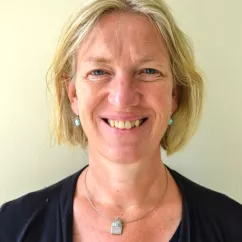How To Keep the Human Touch While Digitizing Agricultural Value Chains

Hedwig Siewertsen is Head of Inclusive Finance at AGRA (Alliance for Green Revolution in Africa). AGRA is a farmer-centered, African-led and partnerships-driven institution that aims to make financial services accessible and affordable to agricultural SMEs and smallholder farmers in food crops in 11 African countries. Prior to joining AGRA, Hedwig was CEO of an impact fund investing in East African SMEs and served as Deputy Director and senior consultant in Triodos Facet (now Palladium), a consulting firm specialized in entrepreneurship development and financial services delivery to MSMEs in emerging markets. She has a B.Sc. in Tropical Agriculture and a Masters’ degree in Econometrics.
FinDev Gateway: At SAM, your panel discussed the digital transformation of agricultural value chains. What was the most interesting take-away?
Hedwig Siewertsen: Digital transformation has been a key topic for agricultural and rural inclusive finance for the last fifteen years. One of the most interesting aspects discussed on the panel is the paradox that digitizing processes works best when a strong human component is maintained. We have seen this at AGRA as well. A presence of agro-dealers, microfinance institutions and other support providers in the field is crucial for connecting with farmers in person and for creating the necessary trust to work together.
In-person contacts are often also necessary to introduce farmers to the tools they will use and to ensure basic digital literacy. Technology has an enormous potential to make processes more efficient, scalable and cost-effective, but in our experience, its implementation is best supported by an existing human relationship to maximize this potential.
FinDev: It’s interesting to note how in-person interaction remains key. However, we know how costly it can be to ensure a presence on the ground, especially in isolated and remote areas.
Hedwig: The cost factor of agents on the ground is certainly a crucial aspect and during the panel we discussed the benefit of sharing agent networks. Many organizations, including banks, telecommunications companies and fast-moving consumer goods sellers, have been experimenting with this strategy for some time and have achieved good results.
Another solution is to encourage demand aggregation of individual farmers, with cooperatives or other formal or informal organizations. For example, AGRA often works with village organizations to assess the collective needs of farmers living in the same village.
One of the most interesting aspects discussed on the panel is the paradox that digitizing processes works best when a strong human component is maintained.
Another panelist, Arnaud de Lavallette from ADA, presented a more formal structure based on ADA’s web platform F 2.0 which aims to empower small groups of farmers to receive tailored loans which they pay back in kind with a share of the harvest. The platform connects farmers' groups with MFIs to better address the specific needs of these small groups, helping to increase the financial inclusion of smallholders. This model also reduces operational risks and makes the MFIs’ services more efficient and more targeted as the loans are customized based on each small farmer group’s demand.
Another successful option is to provide farmers with a bundle of interrelated products and services instead of having specialized agents for just one product. This is the experience of Francis Obirikorang, CEO of AgroCenta, who also spoke on the panel. Through a network of multifunction kiosks and a digital platform, AgroCenta provides market information, storage, delivery solutions and financial services to smallholder farmers in Ghana. By combining digital tools with a physical presence, they are also able to increase efficiency and effectiveness.
FinDev: So the key is to create links between all the actors of the agriculture value chain and to use technology to make these exchanges more intense and efficient.
Hedwig: Exactly. For smallholder farmers, it is essential to have access to inputs, and for that, they need credit. However, their resilience depends on their ability to access the market. Taking out loans without knowing whether they will be able to sell their product just makes them more vulnerable. So AGRA brings together agro-dealers, microfinance institutions, farmers and buyers before the planting season, so that farmers can go into the season with purchase agreements already in place. While the final price is determined by the market at harvest time, all other aspects are set out in the agreement and it is in each party’s interest to respect it. Once everyone is satisfied with the outcome of the in-person discussions, digital platforms can facilitate exchanges and make the process more efficient.
We must remember that agricultural value chains only work if all the pieces are taken into consideration.
FinDev: How else can we strengthen the resilience of smallholder farmers?
Hedwig: I think microinsurance should increasingly be at the core of these discussions, at the level of microfinance institutions but also at the level of regulators. Unfortunately, this service is still underused, but microinsurance can play a fundamental role in protecting vulnerable small producers, especially those facing additional challenges due to climate change.
Finally, we must remember that agricultural value chains only work if all the pieces are taken into consideration. This means we need to make sure that small producers have easy access both to quality inputs and to markets at the same time.


